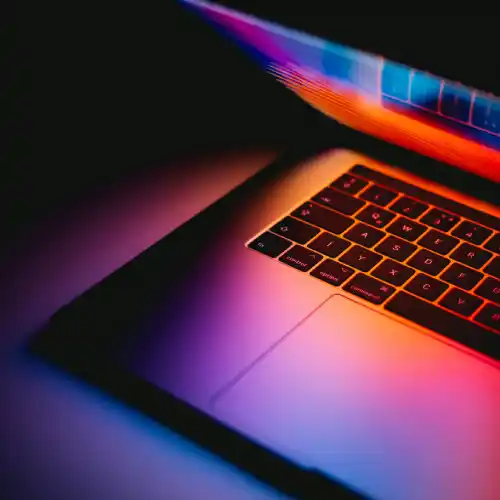Artificial Intelligence (AI) is rapidly transforming various industries, and graphic design is no exception. From automating tedious tasks to providing creative inspiration, AI is becoming an indispensable tool for designers. This article explores the multifaceted ways AI is impacting graphic design, enhancing both creativity and efficiency.
1. AI is in Graphic Design: Automation of Repetitive Tasks
One of the most significant benefits of AI in graphic design is the automation of repetitive tasks. AI tools can handle mundane tasks such as resizing images, removing backgrounds, and adjusting color schemes. This automation frees up designers to focus on more creative aspects of their work.
Examples:
- Adobe Photoshop’s AI Features: Adobe Sensei, the AI platform integrated into Adobe Creative Cloud, can perform complex tasks like content-aware fill and auto-tagging of images.
- Canvas Magic Resize: This feature allows designers to automatically resize designs to fit various dimensions without manual adjustments.
2. Enhanced Creativity and Inspiration
AI tools can serve as creative partners, offering suggestions and generating ideas that designers might not have considered. By analyzing vast amounts of design data, AI can predict trends and provide insights into what works best in different contexts.
Examples:
- Logo Design: AI-powered tools like Looka and Logojoy use machine learning algorithms to create custom logos based on user preferences and industry trends.
- Mood Boards and Palettes: Platforms like Adobe Color and Designify utilize AI to generate color palettes and mood boards that align with current design trends.
3. AI is in Graphic Design: Personalization and Customization
AI enables a high degree of personalization in graphic design, allowing designers to create tailored content that resonates with specific audiences. This is particularly useful in marketing and branding, where personalized visuals can significantly enhance engagement.
Examples:
- Personalized Marketing Campaigns: AI-driven tools like Persado analyze audience data to generate personalized marketing visuals that increase engagement and conversion rates.
- Dynamic Web Design: AI can adapt web design elements in real time based on user behavior, creating a more personalized browsing experience.
4. Improved Accessibility
AI is also making graphic design more accessible. AI-driven design platforms are simplifying the design process, allowing individuals with little to no design experience to create professional-quality graphics.
Examples:
- DIY Design Tools: Tools like Canva and Crello use AI to offer intuitive drag-and-drop interfaces, making design accessible to non-professionals.
- Voice-Activated Design: AI advancements are leading to voice-activated design tools, enabling users to create and edit designs through voice commands.
5. AI is in Graphic Design: Efficiency and Speed
AI accelerates the design process by quickly analyzing and processing large amounts of data. This speed is particularly beneficial in environments where time is critical, such as news media and live events.
Examples:
- Real-Time Data Visualization: AI tools can instantly generate data visualizations for live events, making it easier to present complex information quickly and clearly.
- Rapid Prototyping: AI-driven design software can rapidly create prototypes, allowing designers to test and iterate on ideas more efficiently.
6. Predictive Analytics
AI can predict the success of design elements by analyzing past performance data and current trends. This predictive capability helps designers make informed decisions and create more effective designs.
Examples:
- Trend Analysis: Tools like Google Trends and Trendspottr use AI to identify emerging design trends, helping designers stay ahead of the curve.
- Performance Metrics: AI can analyze user interaction data to determine which design elements are most effective, guiding future design choices.
7. AI is in Graphic Design: Collaborative Design
AI facilitates collaboration by providing platforms where multiple designers can work together seamlessly. These platforms often include AI features that assist in project management and version control.
Examples:
- Cloud-Based Design Platforms: Tools like Figma and InVision incorporate AI to streamline collaboration, allowing multiple designers to work on the same project in real time.
- AI-Assisted Feedback: AI can provide instant feedback on design elements, making it easier for teams to iterate and improve their work.
8. Ethical Considerations
While AI offers numerous benefits, it also raises ethical considerations, such as the potential for job displacement and the need for transparency in AI-driven design decisions. Designers must navigate these challenges to ensure responsible use of AI.
Examples:
- Job Displacement Concerns: As AI automates more tasks, there is a concern about the potential loss of jobs in the design industry. However, many experts argue that AI will augment rather than replace human designers.
- Transparency in AI: Designers must ensure that AI tools are used transparently and ethically, particularly when it comes to data privacy and algorithmic bias.
Conclusion
AI is profoundly impacting graphic design, enhancing creativity, efficiency, and accessibility. By automating repetitive tasks, providing creative inspiration, and enabling personalized design, AI is transforming the way designers work. However, it’s essential to address the ethical considerations and ensure that AI complements human creativity rather than replacing it. As AI continues to evolve, it will undoubtedly play an even more significant role in the future of graphic design.
By understanding and leveraging AI in graphic design, professionals can stay ahead of the curve and create innovative, impactful designs that resonate with their audiences. Embracing AI not only enhances the creative process but also opens up new possibilities for what design can achieve.
For more insights into the latest trends and tools in graphic design, visit Adobe, Canva, and Venngage.









